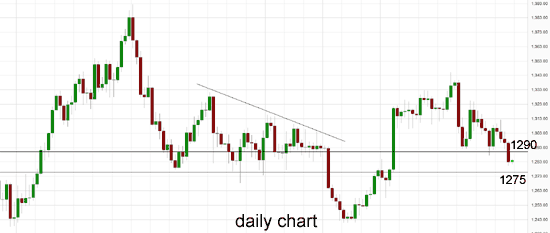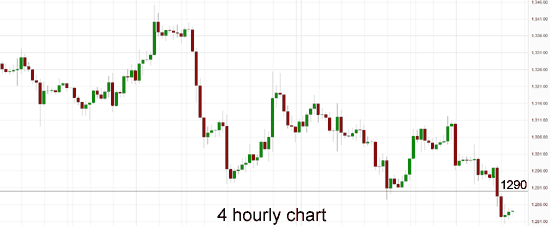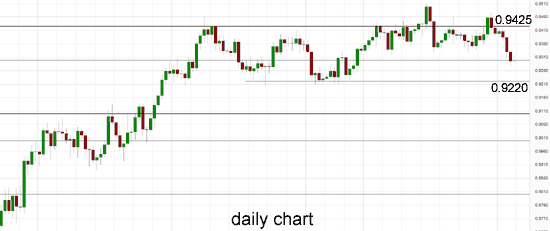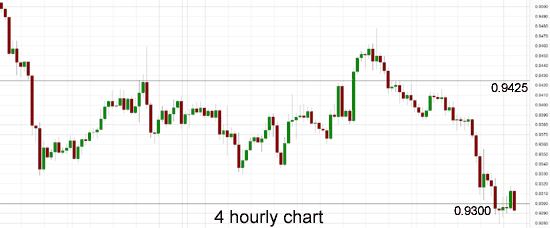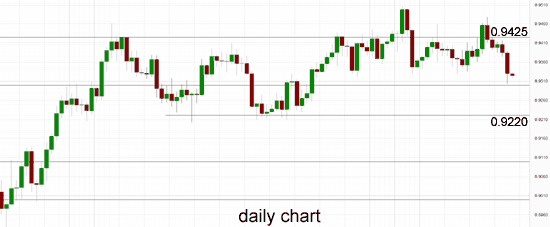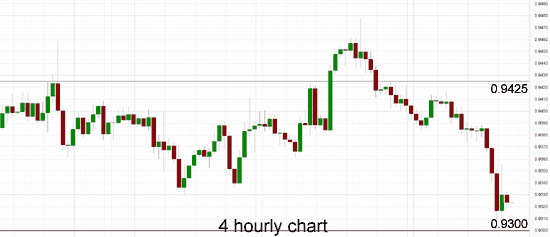The euro is unchanged on Thursday, as EUR/USD continues to trade just shy of the 1.34 level in the European session. It’s been a July to forget for the struggling euro, which has coughed up about 300 points to the surging US dollar. On the release front, Eurozone indicators were mixed. German Retail Sales and Unemployment Change beat their estimates, and French Consumer Spending posted another strong gain. Eurozone CPI and Unemployment Rate met expectations. In the US, today’s highlight is Unemployment Claims. The markets are braced for a rise in claims, which would likely have a negative impact on the dollar.
Eurozone CPI, one of most important indicators, edged lower to 0.4%. Although this was close to the estimate of 0.5%, this figure was the lowest in almost five years, and raises concerns of deflation. There was better news from the Eurozone Unemployment Rate, which dipped to 11.4%, its lowest level since September 2012. German data was positive, led by Retail Sales which jumped 1.3%, beating the estimate of 1.1%. German Unemployment Change posted a decline of 12,000, easily surpassing the estimate of a drop of 5,000.
In the US, GDP soared in the second quarter, expanding at an annual rate of 4.0%. This easily beat the estimate of 3.1%. The boost in economic activity was boosted by strong consumer confidence and business activity in Q2. Meanwhile, ADP Nonfarm Payrolls was unable to keep pace. The key employment indicator dropped to 218 thousand, compared to 284 thousand a month earlier. This was well off the estimate of 234 thousand. If the official Nonfarm Payrolls follows suit with a weak reading on Friday, the US dollar could give up its recent gains.
CB Consumer Confidence was outstanding on Tuesday, pointing to a sharp increase in June. The key indicator jumped to 90.9 points, crushing the estimate of 85.5 points. This was the indicator’s highest level since September 2007. Consumer confidence is closely tracked by analysts since a confident consumer is likely to increase consumption, which is critical for economic growth.
EUR/USD for Thursday, July 31, 2014

EUR/USD July 31 at 8:50 GMT
EUR/USD 1.3398 H: 1.3400 L: 1.3385
EUR/USD Technical
S3
S2
S1
R1
R2
R3
1.3175
1.3295
1.3346
1.3487
1.3585
1.3651
EUR/USD is almost unchanged, with little activity in the Asian and European sessions.
1.3346 continues to provide support. 1.3295 is stronger.
On the upside, 1.3487 has some breathing room as the pair trades at the 1.34 line.
Current range: 1.3346 to 1.3487
Further levels in both directions:
Below: 1.3346, 1.3295, 1.3175 and 1.3104
Above: 1.3487, 1.3585, 1.3651 and 1.3786
OANDA’s Open Positions Ratio
EUR/USD ratio is almost unchanged in Thursday trade. This is consistent with the lack of movement displayed by the pair. The ratio has a majority of long positions, indicative of trader bias towards the euro reversing breaking out and moving higher.
EUR/USD Fundamentals
6:00 German Retail Sales. Estimate 1.1%. Actual 1.3%.
6:45 French Consumer Spending. Estimate 0.3%. Actual 0.9%.
7:55 German Unemployment Change. Estimate -5K. Actual -12K.
8:00 Italian Monthly Unemployment Rate. Estimate 12.6%. Actual 12.3%.
9:00 Eurozone CPI Flash Estimate. Estimate 0.5%. Actual 0.4%.
9:00 Eurozone Core CPI Flash Estimate. Estimate 0.8%. Actual 0.8%
9:00 Eurozone Unemployment Rate. Estimate 11.6%. Actual 11.5%.
9:00 Italian Preliminary CPI. Estimate +0.1%. Actual -0.1%.
11:30 US Challenger Job Cuts.
12:30 US Unemployment Claims. Estimate 303K.
12:30 US Employment Cost Index. Estimate 0.5%.
13:45 US Chicago PMI. Estimate 63.2 points.
14:30 US Natural Gas Storage. Estimate 92B.
*Key releases are highlighted in bold
*All release times are GMT
Get OANDA’s exclusive weekly Market Pulse FX
Email Address:
Preferred Format:
HTML Text
This article is for general information purposes only. It is not investment advice or a solution to buy or sell securities. Opinions are the authors; not necessarily that of OANDA Corporation or any of its affiliates, subsidiaries, officers or directors. Leveraged trading is high risk and not suitable for all. You could lose all of your deposited funds.
